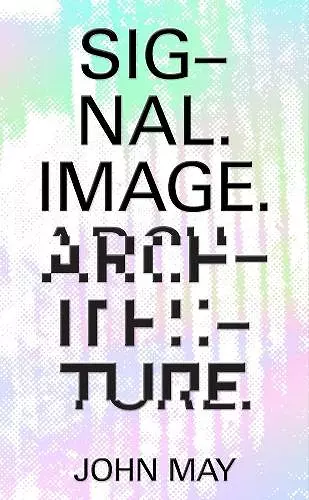Signal. Image. Architecture.
John May author Bruno Latour author
Format:Paperback
Publisher:Columbia Books on Architecture and the City
Published:15th Oct '19
Should be back in stock very soon

Architecture is immersed in an immense cultural experiment called imaging. Yet the technical status and nature of that imaging must be reevaluated. What happens to the architectural mind when it stops pretending that electronic images of drawings made by computers are drawings? When it finally admits that imaging is not drawing, but is instead something that has already obliterated drawing? These are questions that, in general, architecture has scarcely begun to pose, imagining that somehow its ideas and practices can resist the culture of imaging in which the rest of life now either swims or drowns. To patiently describe the world to oneself is to prepare the ground for an as yet unavailable politics. New descriptions can, under the right circumstances, be made to serve as the raw substrate for political impulses that cannot yet be expressed or lived, because their preconditions have not been arranged and articulated.
Signal. Image. Architecture. aims to clarify the status of computational images in contemporary architectural thought and practice by showing what happens if the technical basis of architecture is examined very closely, if its technical terms and concepts are taken very seriously, at times even literally. It is not a theory of architectural images, but rather a brief philosophical description of architecture after imaging.
Signal. Image. Architecture. is a significant intervention into discussions of both the “image” and the “digital” in architecture and urbanism. John May poses questions about the novel forms of actuarial and statistical life and about the new modalities of territory and governmentality emerging today through imaging infrastructures. As we turn to AI, big data, and predictive analytics, our actions and our gestures are increasingly tied to the training of machines, and we are left asking what representation, gesture, and inscription can still do. This book radically breaks from debates about when architecture became digital or what the digital is. It instead speculates on the aesthetic and political stakes of our imaging practices in design and offers a manifesto for future potentialities. -- Orit Halpern, Concordia University
John May’s Signal. Image. Architecture. puts a philosophical lens on the practices of design. By keeping instruments front and center, he pries apart writing, images, and photographs and drives us to focus on the disciplined conduct of each. Front and center: he zeroes in on the everyday and the highly technical forms of making, processing, and sending design. Throughout this fascinating study, May joins theory with concrete practice and, in so doing, remakes familiar elements of the design world into fascinating, urgent objects of our present. -- Peter Galison, Harvard University
John May is an architect who theorizes and a theorist who designs, and both with a philosophical and historical sensibility that frames his understanding of the fluid conditions that shape present architectural practice. Drawing from anthropology, media theory, science and technology studies, and histories and theories of vision and cybernetics, he has produced an archaeology of our deepening immersion into the technics of electronic images over the past three decades, and a “pathographic manifesto” of the hidden political dimensions of contemporary image consciousness. This book will resonate well beyond architecture to any field concerned with cultural production, even as it asserts architecture’s centrality in a world now defined by the endless circulation of electronic images. -- K. Michael Hays, Harvard Graduate School of Design
ISBN: 9781941332467
Dimensions: 183mm x 111mm x 11mm
Weight: 136g
144 pages